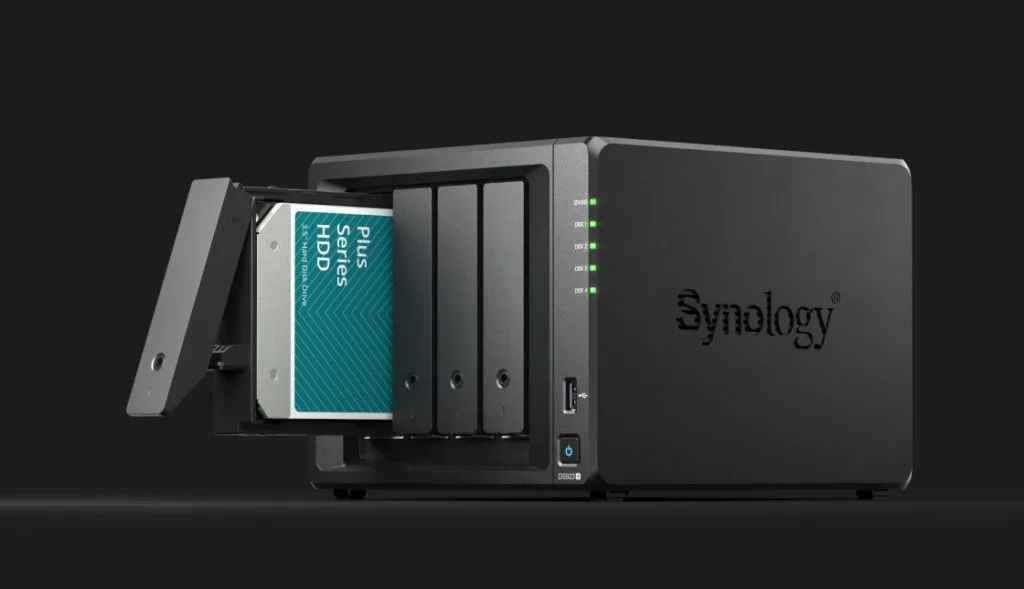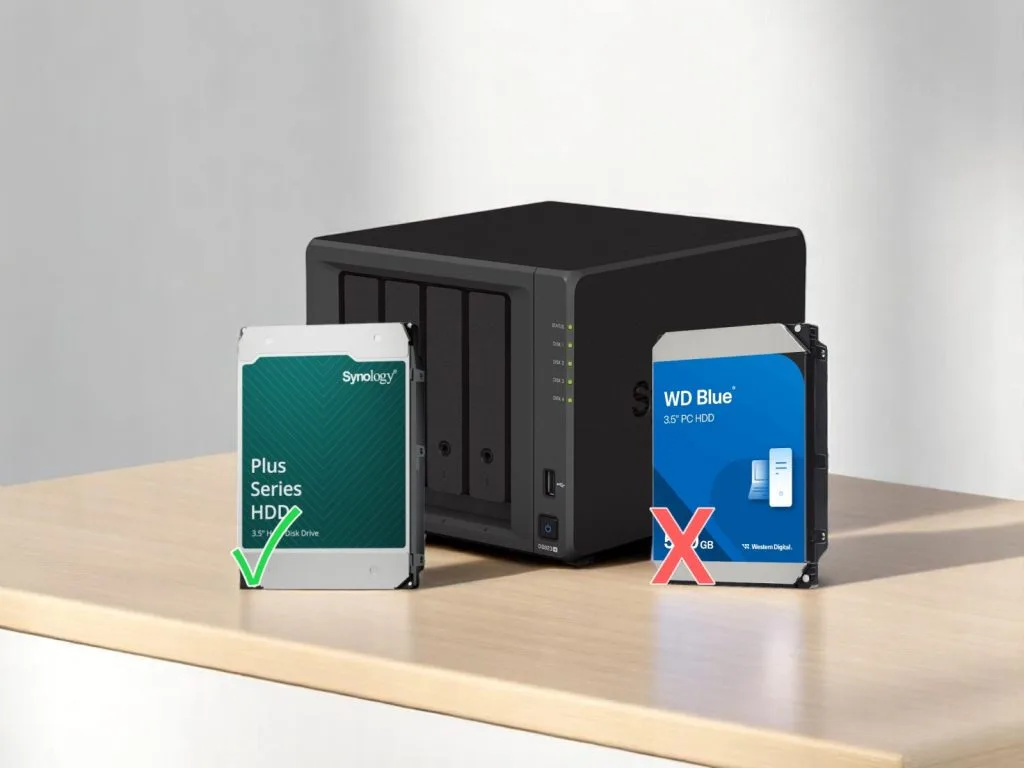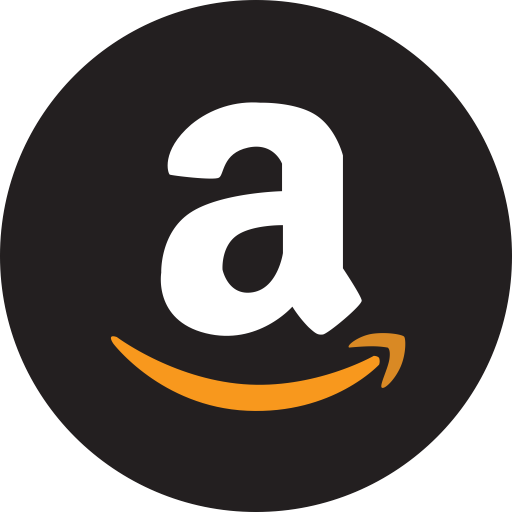In a move that has sent shockwaves through the NAS community, Synology has confirmed that their 2025 Plus series models will only support Synology-branded hard drives.
I’ve been using Synology NAS devices for years in my home lab setup, and this announcement represents a significant shift in their approach to hardware compatibility.
After diving into official statements, community reactions, and comparing alternatives, I’m sharing everything you need to know about this controversial change.
Synology’s New Drive Requirement: The Official Announcement
The story broke when Synology Germany published a press release on April 16th, 2025, announcing that all Plus series models released from 2025 onward—including the anticipated DS925+, DS1825+, and other models—will require either Synology’s own hard drives or third-party hard drives certified by Synology.
According to the announcement, only these approved drives will offer “full functionality and support.”
I was immediately concerned when I read Chad Chiang’s statement, Synology’s Managing Director: “With our proprietary hard drive solution, we have already seen significant advantages for our customers in various applications and scenarios.”
“By expanding our integrated ecosystem to the Plus series, we want to provide all users—from home users to small businesses—with the highest level of security, performance, and at the same time significantly more efficient support.”
This is a major departure from Synology’s previous approach.
While they had already implemented similar restrictions on their enterprise-class XS Plus series and rack-mounted models, extending this policy to the Plus series directly impacts home users and small businesses who typically rely on these more affordable options.
I should note that Plus models released through 2024 (including the current DS923+, DS1522+, etc.) won’t be affected by this change.
What Features Will Be Limited on Non-Synology Drives?
Based on my analysis of Synology’s announcement, using non-approved drives in 2025 Plus models will result in several functional limitations:
- Inability to create storage pools
- No volume-wide deduplication
- Loss of lifespan analysis features
- No automatic firmware updates for drives
- Limited technical support for problems traced to non-compatible media
The inability to create storage pools is particularly concerning.
In my experience, this essentially means you won’t be able to use the drives for their primary purpose at all – rendering them useless in the new NAS systems.
When planning your storage strategy for 2025 and beyond, you’ll need to factor in not just the cost of the NAS enclosure but also potentially higher costs for compatible drives.
Understanding Synology’s HDD Lineup and Pricing
Before making a judgment, I thought it was important to examine Synology’s current drive offerings.
In my research of online retailers, I’ve found that Synology hard drives are essentially rebranded drives from major manufacturers like Toshiba and Seagate, but with custom firmware.
Looking at current pricing on major retailers, Synology’s 16TB enterprise drives cost approximately $320, while comparable Seagate IronWolf drives run about $300.
However, I’ve noticed several limitations with Synology’s drive lineup:
- Limited capacity options (currently maxing out at 16TB for Plus series compatibility)
- Fewer drive types compared to the open market
- Potential stock constraints during supply chain issues
- Higher prices for enterprise-grade models
When I built my last NAS, I opted for 18TB drives which weren’t available in Synology’s lineup at the time.
You might want to consider purchasing a current-generation Synology model now if drive flexibility is important to your setup, rather than waiting for the 2025 models like the DS925+ or DS1825+.
SSD Compatibility Concerns
The drive restrictions don’t just affect hard drives – they’ll impact SSDs as well, which is a major concern for performance-focused users.
Currently, Synology only offers enterprise-grade SSDs that would be complete overkill for many Plus series users, especially those with compact models like the rumored DS625 Slim that primarily use 2.5-inch drives.
Without more affordable mid-tier SSD options from Synology, users looking to implement SSD caching or all-flash arrays may face significant cost barriers.
Even more concerning is the lack of Synology-branded M.2 NVMe options for models that support NVMe caching.
Synology’s Justification: Security, Reliability, and Support

Synology claims this change will provide users with improved reliability, system security, and more efficient technical support.
According to their statement, using validated drives results in nearly 40% fewer storage-related issues and faster problem resolution.
From my perspective working with storage systems, there’s some merit to this argument.
I’m skeptical of these claims, as 7,000 hours is less than one year of continuous operation (about 291 days), which isn’t particularly impressive for enterprise storage.
The Real Motivation: Profit Margins and Business Strategy
While Synology presents technical justifications, I believe the primary motivation is financial.
By controlling the drive ecosystem, Synology stands to gain in several ways:
- Increased revenue per sale (drives typically represent 65-75% of the total NAS solution cost)
- Reduced support costs by limiting variables
- Creating a more predictable business model
- Shifting toward a more appliance-like, enterprise-focused approach
In my analysis of their recent product decisions, I’ve observed Synology gradually moving away from the prosumer/enthusiast market.
They’ve discontinued features like the Print Server, removed USB WiFi adapter support, dropped video encoding capabilities, and eliminated Video Station.
As NASCompares found out, Synology seems to be transitioning to a more appliance-like business model, focusing primarily on enterprise customers where support costs are less of a concern relative to revenue.
User Reactions: The Community Responds
The reaction from the Synology user community has been overwhelmingly negative.
In my time browsing through various online forums and discussion boards, I’ve seen thousands of comments expressing disappointment and plans to switch to alternative solutions.
One user on Reddit summarized the sentiment perfectly: “For 15+ years I’ve been using Synology at home, and recommended it to customers. Then they started nerfing the units – first print server, then USB WiFi adapters, encoding, video station, and now this. I guess Synology can go and f*** themselves.”
Another long-time user commented: “This reads like the writing is on the wall for DS products. I had a feeling that might be their plan. I expect their focus will be more on enterprise and BeeStation type products going forward.”
Understanding Migration Limitations
While Synology has stated that drive migration will work “without restrictions,” the fine print suggests some important limitations.
Based on the information available, it appears that while you’ll be able to migrate your existing storage pool intact, any attempts to expand that pool or replace failed drives later would likely require Synology-certified drives.
If you’re planning an upgrade path from a current Synology NAS to a DS925+ or other 2025 model, consider whether your storage needs are likely to remain stable or grow, as expansion possibilities may be limited.
Potential Workarounds
Based on discussions in technical forums, some advanced users are already speculating about potential workarounds to bypass these restrictions.
In the past, technically inclined users have modified compatibility lists via SSH access to allow unsupported drives on restricted Synology models.
Comparing Alternatives: UniFi UNAS Pro and Others
With this concerning development, I’ve been researching alternatives to Synology for those unwilling to accept the proprietary drive requirement.
One standout option is the UniFi UNAS Pro from Ubiquiti, offering a 7-bay solution with built-in 10GbE connectivity for $499 with no drive restrictions.
The UNAS Pro features an ARM processor, 8GB RAM, and a clean interface with excellent snapshot management and backup capabilities.
Its main limitations include no Docker support or virtualization, but for file storage and backup, it’s a compelling alternative.
For more details read my blog post comparison here.
Other alternatives worth considering include:
- QNAP NAS devices (excellent hardware, though with some security concerns)
- TerraMaster (budget-friendly options with improving software)
- ASUSTOR (solid mid-range offerings)
- UGREEN (newer to the market but gaining popularity)
- DIY solutions with TrueNAS or Unraid
You might find that diversifying your storage approach with different platforms for different workloads provides the best of all worlds.
Who Should Still Buy Synology in 2025?
Based on my analysis, here’s who might still consider Synology despite the drive restrictions:
- Enterprise users: If you’re in a business environment where reliability and support are paramount, and the additional cost is justifiable as an operating expense.
- Users who value simplicity: If you want a turnkey solution and don’t mind paying a premium for seamless operation.
- Existing Synology users: If you’re heavily invested in the Synology ecosystem and rely on specific DSM applications.
- Users with mission-critical data: If maximum reliability for critical data is your primary concern.
Who Should Look Elsewhere
On the flip side, these users might want to consider alternatives:
- Budget-conscious users: If you’re looking to maximize storage capacity for your dollar.
- Enthusiasts and tinkerers: If you enjoy customizing your setup and want maximum flexibility.
- Media server users: With Synology’s reduced focus on media capabilities like video transcoding.
- Users requiring larger drives: If you need maximum capacity drives beyond what Synology currently offers (20TB+).
- DIY advocates: If you prefer building and maintaining your own systems.
If you’re currently on the fence about a NAS purchase, you might want to either buy a 2024 model now or explore the increasingly competitive alternatives that offer greater hardware flexibility.
Frequently Asked Questions About Synology’s Drive Policy
What drives work with Synology 2025 Plus series?
As of April 2025, only Synology-branded drives will be officially compatible with the DS925+, DS1825+, and other 2025 Plus series models.
Synology plans to update their compatibility list and introduce a new third-party drive validation program, but no timeline has been provided for when additional drives might be approved.
Do I need Synology branded drives for all Synology NAS models?
No.
This requirement only applies to Plus series models released in 2025 and beyond.
Current models (through 2024) will continue to support third-party drives as they do now. The J series models appear to be exempt from this policy as well.
Is Synology forcing proprietary drives?
Yes, for new 2025 Plus series models, Synology is requiring their own branded drives or drives specifically certified by them for full functionality.
Key features like storage pool creation may be unavailable with non-approved drives.
Can I use WD Red in Synology 25 series?
Based on current information, standard WD Red drives will not be supported in 2025 Plus series models unless they receive specific certification from Synology.
At present, no WD drives are on the approved list for these upcoming models.
Can I use Seagate IronWolf in Synology 25 series?
Like WD Red drives, Seagate IronWolf drives are not currently on Synology’s compatibility list for 2025 Plus series models.
Unless Synology certifies them through their upcoming validation program, they won’t offer full functionality.
What happens if I use unsupported drives in Synology?
In 2025 Plus series models, using unsupported drives will likely prevent you from creating storage pools, effectively making the drives unusable.
You’ll also lose access to features like volume-wide deduplication, lifespan analysis, and firmware updates, with limited or no technical support for drive-related issues.
Are Synology drives more expensive?
Yes, Synology drives typically cost 5-20% more than equivalent third-party NAS drives, depending on the capacity and model.
For enterprise-grade drives, the premium can be even higher, which becomes significant when populating multiple drive bays.
Can I migrate old drives to new Synology Plus?
According to Synology, migration of hard drives from existing NAS units to new Plus models will be possible “without restrictions,” but the exact implementation remains unclear.
Creating new storage pools or expanding existing ones will likely still require Synology-approved drives.
Is Synology abandoning home users?
While not explicitly abandoning home users, Synology’s recent decisions suggest a strategic shift toward enterprise-focused solutions.
The drive requirement, combined with previous feature removals like video transcoding and print server functionality, indicates a move toward a more appliance-like model less appealing to home enthusiasts.
What are the best alternatives to Synology NAS?
Top alternatives include QNAP NAS systems, UniFi UNAS Pro, TerraMaster, ASUSTOR, and UGREEN for pre-built solutions.
For more customizable options, consider DIY builds using TrueNAS or Unraid, with your choice depending on your specific needs for performance, flexibility, and ease of use.
Will Synology reverse the drive policy?
It’s unclear if Synology will reverse this policy.
Strong negative feedback from users could potentially influence their decision, but their recent statements suggest they’re committed to this direction.
They may expand the list of certified third-party drives over time, but a complete reversal seems unlikely.
Conclusion: A Turning Point for Synology and Its Users
After analyzing all aspects of this change, I believe we’re witnessing a significant pivot in Synology’s business strategy.
The company appears to be prioritizing enterprise customers and a more controlled ecosystem over the flexibility that made them popular with home users and enthusiasts.
In my years using Synology products, I’ve appreciated their balance of user-friendliness and flexibility.
This move disrupts that balance, forcing users to make a choice between accepting higher costs and less flexibility, or looking to alternative solutions.
For my own home lab, I’ll continue using my existing Synology devices until they reach end-of-life.
However, when the time comes to replace them, I’ll be carefully weighing all options rather than automatically choosing Synology as I would have in the past.
If you’re in the market for a NAS solution in 2025, carefully consider your priorities.
If simplicity and integration matter most, Synology may still be your best bet despite the drive restrictions.
But if flexibility, cost-effectiveness, or specific features like media transcoding are important to you, exploring alternatives could be well worth your time.
This change marks the end of an era for Synology as the go-to recommendation for all NAS users.



